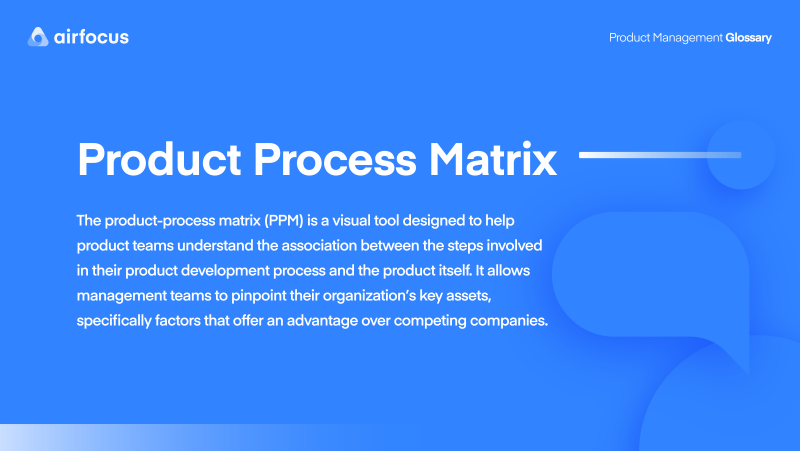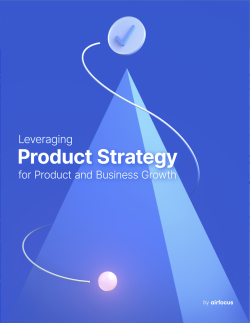Product Process Matrix
Product-process matrix definition
The product-process matrix (PPM) is a visual tool designed to help product teams understand the association between the steps involved in their product development process and the product itself.
Product leaders can leverage the PPM to help product teams and others learn more about a project product-process lifecycle. They may also use the PPM to give stakeholders a better understanding of the lifecycle.
The PPM also allows product leaders and management teams to pinpoint their organization’s key assets, specifically identifying factors that offer an advantage over competing companies. They can use the PPM to make more informed, considered decisions regarding product planning, investments, seizing improvement opportunities, and more.
Robert H. Hayes and Steven C. Wheelwright discussed the product-process matrix in their innovative Harvard Business Review articles in 1979: “Link Manufacturing Process and Product Life Cycles” and “The Dynamics of Process-Product Life Cycles.” They explored common issues in market manufacturing processes and highlighted strategies to estimate product progress and analyze processes involved in bringing goods to market in the most efficient, effective way.
What are the Product-Process Matrix Stages?
The product-process matrix has four process stages:
Job Shop (Jumbled Flow)
Batch (Disconnected Line Flow)
Assembly Line (Connected Line Flow)
Continuous Flow (Continuous)
Building a product-process matrix can be complex. It typically requires leaders and managers to work closely with teams to define the most efficient processes. Overlooking or undervaluing a key step in a production process could create disruptions down the line.
The Product-Process Matrix and Examples
Let’s take a closer look at each stage :
Job Shop
Organizations falling into the Job Shop/Jumbled Flow process tend to manufacture a range of products in low volume, possibly in a reactive manner. Job Shop products are often unique: a business may specialize in creating customized items based on strict specifications (e.g. replacing a component for an old machine that is no longer produced but pivotal to a business’s operations).
Batch
Companies using batch processes specialize in higher-volume products than those in the Job Shop stage, such as printing or food-production firms. Finding an ideal manufacturing strategy allows batch companies to continually and repeatedly produce goods in a cost-effective, sustainable way. The production process is typically smoother than in Job Shop/Jumbled Line companies but is still somewhat disconnected.
Assembly Line
Organizations producing goods in high demand rely on an assembly-line approach, such as automobile companies. Processes involve a combination of manual workers and automation technologies. The production process is standardized and different operations follow the same route. However, continuous production can be incredibly expensive so demand needs to be high enough to justify the costs.
Continuous Flow
Specialized machinery is required to facilitate continuous-flow production processes. Organizations that fit into this product-process stage manufacture a high volume of goods and take advantage of high standardization. Continuous Flow companies produce essential goods that are constantly required on the market, such as paper or always-in-demand food products.

General FAQ

Glossary categories
Create effective product strategy

Experience the new way of doing product management








